Methods and conditions for storing potatoes in winter: in the cellar and basement, in the apartment (on the balcony)
Recently, the understanding has come that it is necessary to consume the best possible potatoes, best of all grown with their own hands in their own summer cottage. At the same time, it is significant that the problem of preserving the harvest is of the greatest interest.
And if you want the potatoes not to sprout, rot or get infected with all sorts of diseases, then first you need to properly prepare it, and then observe all storage conditions exactly.
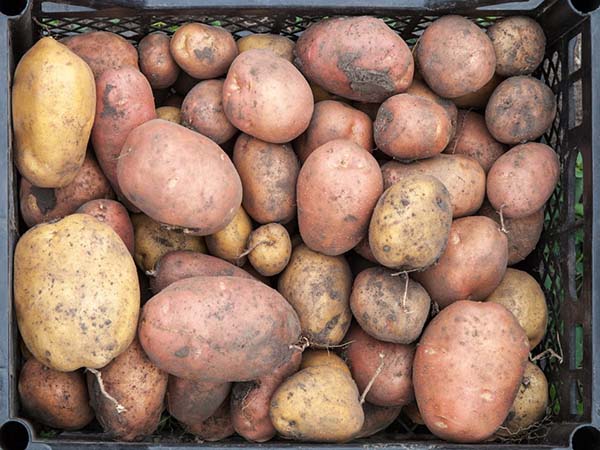
Content
Preparing potatoes for storage
Naturally, first you need to first dig out the potatoes and lightly dry the tubers right in the garden under the sun.
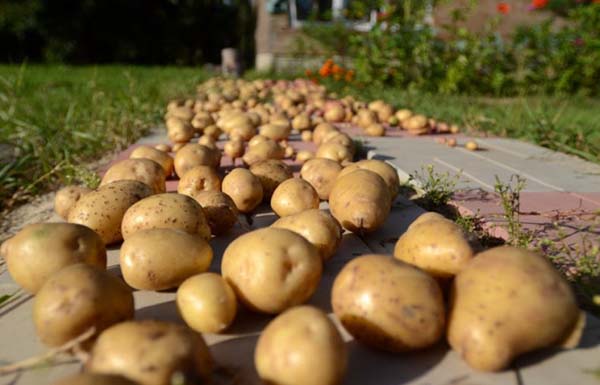
Important! Detailed information about when and how to dig the potato crop for storage, read in this material.
Should I wash potatoes before storing them?
To wash or not wash potatoes before storing? - the question is quite interesting. Some summer residents note quite significant advantages of such a procedure, others highlight the disadvantages that are decisive for them.
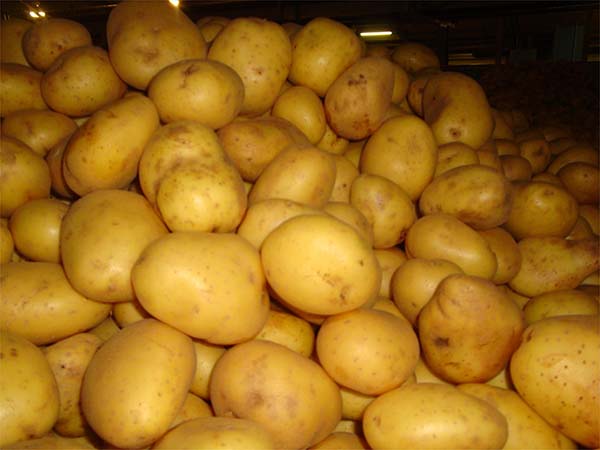
The main benefits of storing washed potatoes are:
- on clean tubers, namely on the peel, it is easier to see possible defects, the beginnings of diseases and to discard substandard potatoes;
- minimum of debris and dirt;
- as stocks are spent, you can easily assess the condition of the remaining tubers;
- excellent presentation.
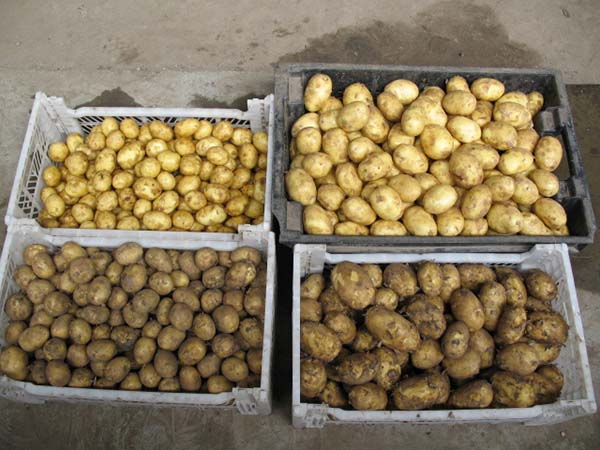
The main disadvantages of storing washed potatoes are:
- too long preparation for storage, a waste of valuable time.
Note! It is clear that washing 50 buckets of potatoes is unrealistic, but in this case it is quite possible to wash the seed material. However, as well as smaller volumes of potatoes.
- if you do not dry the tubers enough, then there is a very high probability of rotting during winter storage.
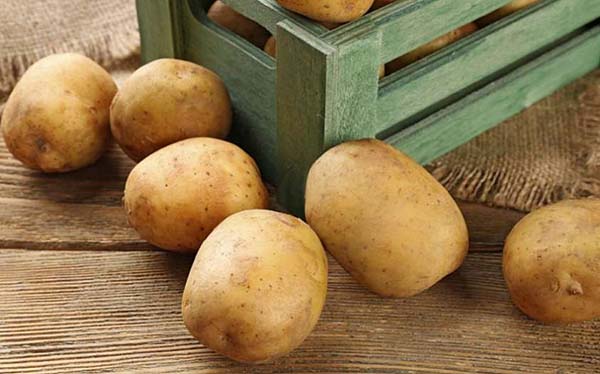
Advice! You can always do your own experiment. Just remember that the main thing - this dry the washed potatoes well.
Video: to wash or not wash potatoes before storing
By the way! If you still decide to wash the potatoes, then it is very good (according to gardeners' reviews) to process it in a weak solution of brilliant green or other means, which will be written about later.
Sorting and preparation of tubers
Only the healthiest and highest quality tubers should be sent for storage. There should be no damage, scratches, marks, stains or other defects on the potatoes. One sick potato will be enough to ruin a large part of the crop.
It is advisable to sort the tubers by size. It is noteworthy that medium-sized nodules are stored better and longer than all, small and too large - worse, they should be eaten as soon as possible.
Important! Separately should be sorted seed potatoes... For planting next year, you should choose the strongest bush with the most exemplary tubers.
Read on how to properly prepare and store planting material.
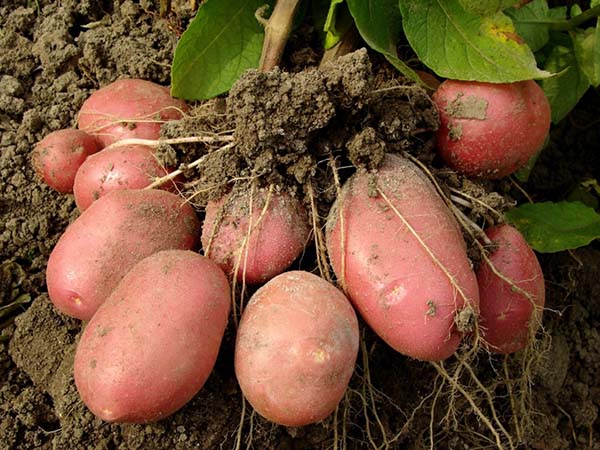
After you lightly dry the dug tubers while still in the garden, and then sort, do not rush to carry them straight to the cellar. It is advisable that the potatoes pass before storing rehabilitation or preparatory period (sometimes it is also called curative), the indisputable advantages of which are the following points:
- During this time, the tubers will completely dry out, their peel will become tough and thicken enough so that the potatoes can be stored for a long time.
- Slightly damaged tubers will "heal" all their wounds (they will dry out and heal).
- If during culling you missed suspicious tubers, then even during the preparatory period you will most likely notice signs of the disease.
So, arrange the tubers in a single layer on a dry bed under a canopy, for example, in a summer kitchen or in the attic, or put them in boxes or in mesh bags. At the same time, it is important that the temperature is kept in the region of + 18 ... + 13 degrees (with a gradual decrease), and the humidity is at least 85-95%.
Thus, potato tubers should lie down for about 1.5-2 weeks (although some summer residents advise holding it for a month). This treatment period will greatly increase the chances of longer storage.
Recommendation! When you dig, wash, dry, sort, process and store - do everything carefully and do not damage the potato tubers, only whole specimens will be stored for a long time.
Processing before storage
Protective treatment of tubers will help to avoid premature decay and spoilage of potatoes, which means, thereby significantly extending the shelf life.
One of the most proven potato treatments is the solution copper sulfate (2 grams per bucket of water), which you need to spray the tubers generously, and then dry well.
For the same purposes, you can use herbal infusion, for the preparation of which you need to pour 350 grams of wormwood, 150 grams of sleepy and 50 grams of tobacco leaves with 1 liter of water and let it brew for a day. Spray tubers (consumption - about 50 ml per 10 kg).
By the way! If you spread phytoncidal plants between potato tubers (mint, wormwood, snowy leaves, rowan, elderberry and tobacco leaves, pine or spruce branches), this will also help you protect them from various rot and other diseases. On average, 10 kg of harvest will require about 100-200 grams of phytoncidal herbs.
Perhaps such a long and thorough preparation seems too laborious, but it will definitely be rewarded with the longest storage period for your potatoes.
How to prepare and store seed potatoes
In general, there are not many differences, except that the future planting tubers should be "greened" at the stage of preparation (hold in the sun for a longer time, but it is desirable still under diffused sunlight). In other words, solanine should be produced in them, which will make them unsuitable for human consumption, but the same poisonous substance will protect potatoes from putrefactive infections, and besides, such tubers will definitely not gnaw mice.
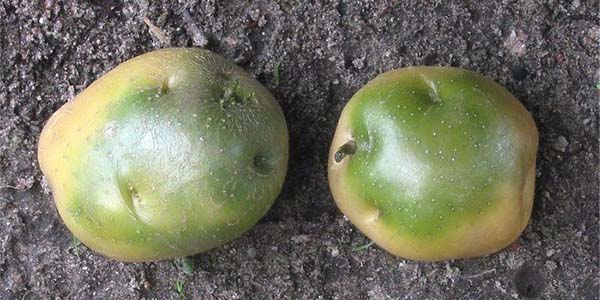
If the tubers that will be eaten are processed as desired, then it is recommended to sprinkle the seed. In this case, such a drug as "Maxim Dachnik" is ideal for you. Then dry thoroughly and store in a separate place.
Optimal storage conditions for potatoes
To keep potatoes for a long time, the following conditions must be met in the room:
- air temperature - +2 .. + 5 degrees;
- air humidity - 80-90%;
- good ventilation, the air should not stagnate;
- the room should be dark.
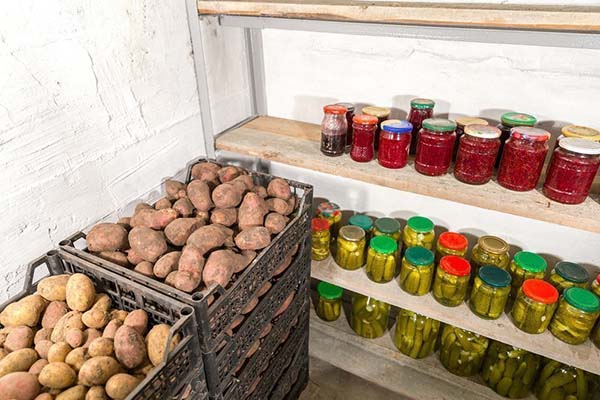
Note! If the temperature is below normal, then the potatoes will freeze, higher - they will begin to germinate. Excessively high humidity (above 90%) - decay will begin, below it will dry out and wrinkle. Storing the tubers in the light will cause them to turn green, that is, they will develop such a poisonous substance as solanine, and they will become unusable.
Where and how to store: ways to store potatoes
Of course, the best place to store potatoes in winter is in the cellar or basement. But you can save potatoes at home without a cellar, namely on a balcony or loggia, or right in an apartment, in a closet, under or next to a window.
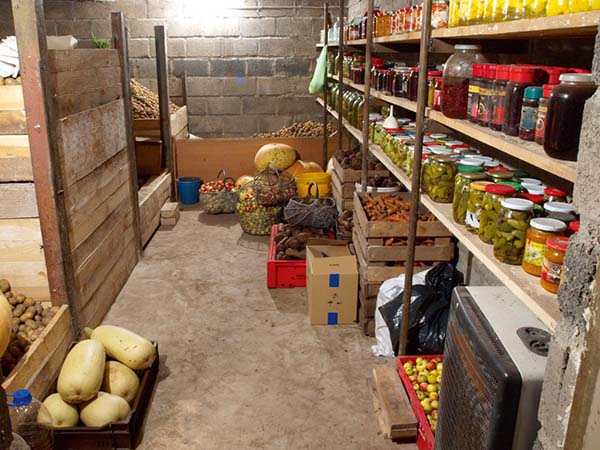
As for the specific methods of storing potatoes, depending on the containers and structures used, this may be:
- in bulk in containers (special boxes) or container (bulk) method;
- on shelves;
- bags (mesh);
- in separate boxes.
How to store in a cellar or basement
As mentioned earlier, it is best to store potatoes in a cellar, because it is “underground” during the entire storage season that the necessary constant temperature regime is maintained. Now it remains to determine what is preferable to store the tubers, which container to choose.
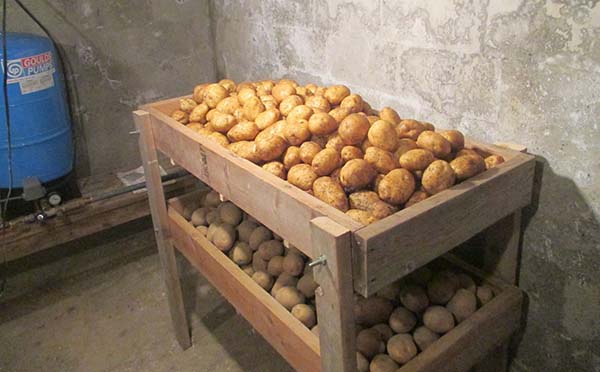
For storing potato tubers, it is optimal to choose wooden boxes, and they should have small gaps between the beams so that air can easily pass inside. It is also good for the box to have a lid (also with holes or gaps between the boards).
Advice! After you put the potatoes in the boxes, it is advisable to sprinkle it on top with sawdust, which absorbs excess moisture well.
Storage of potatoes is quite common. on special rackswhen the tubers are laid out in just one layer. So it will be easier to keep track of them and select spoiled ones in time.
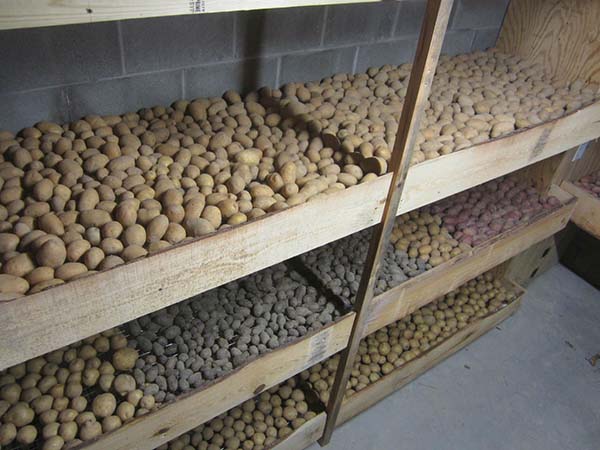
In addition to wooden boxes, potatoes can be stored in plastic boxes (mesh), as well as in mesh bags and sacks made of burlap.The main thing is that the container "breathes", in other words, there are ventilation holes in it.
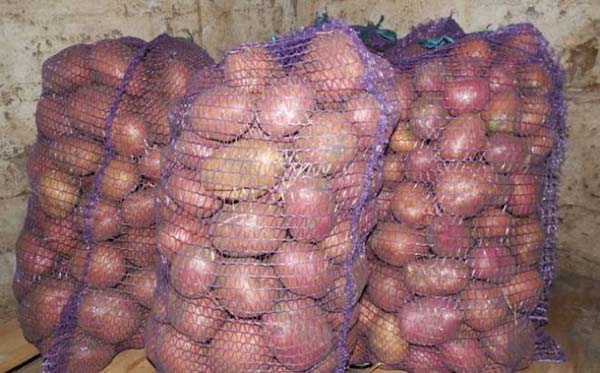
By the way! Before pouring potatoes into a container, you should process the container itself for storage, for example, with potassium permanganate, and then dry it.
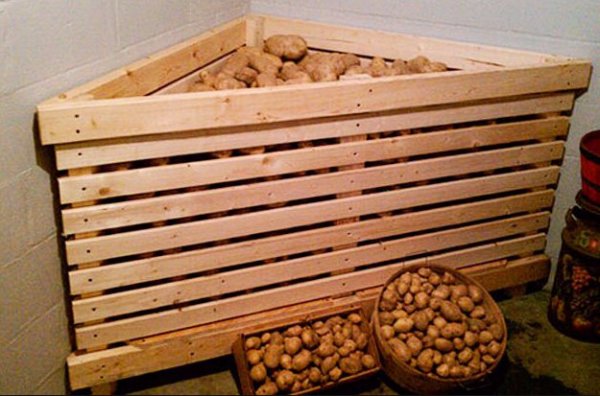
Do not place crates or sprinkle potatoes directly on bare floors. It is recommended to cover it with sawdust or cover it with boards. The boxes can be placed on the same substrate made of boards or bricks. It is even better if you have shelving shelves in the cellar.
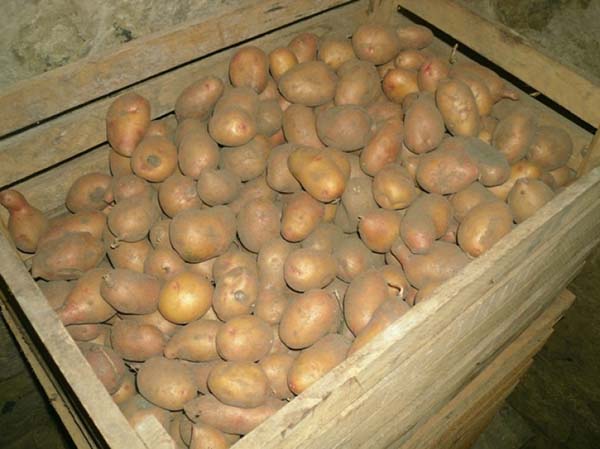
Before storing any vegetables and fruits, including potatoes, the basement or cellar must also be thoroughly processed and disinfected. In addition, do not forget that ventilation should function properly in the basement, but in any case, periodically additional ventilation should be provided.
How to store in an apartment on a balcony or loggia
If you are a city dweller who grows potatoes in the country, then you can easily use a balcony or loggia to store it, or a mini-storage (storage room) under the window.
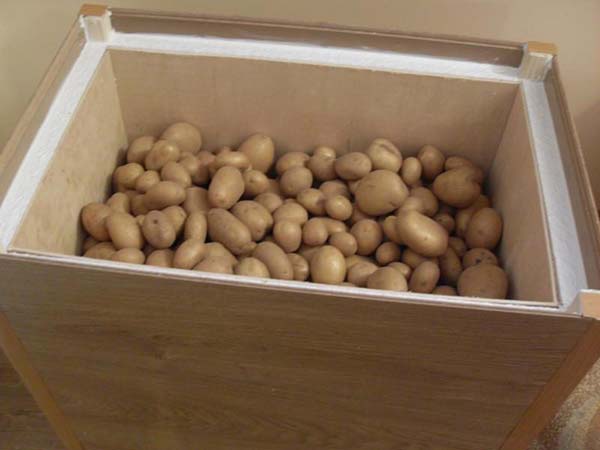
Store potatoes on a glazed loggia only in insulated (with foam, sawdust) double wooden boxes, painted or upholstered with linoleum in order to protect against excess moisture. Moreover, the cover must also be double and insulated.
But if your balcony is not insulated, then you will need to make a thermobox, for example, according to the following scheme:
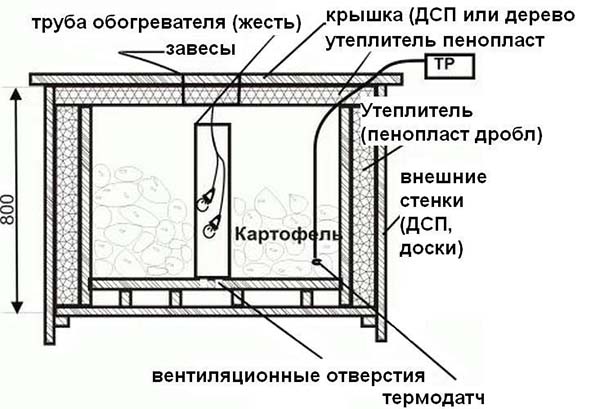
Better yet, watch the video about the experience of creating such a homemade vegetable storage.
Video: thermobox (chest) for storing potatoes on the balcony in winter
This is the only way you can preserve potatoes at home in winter, even in the most severe frosts.

How to store in a pit (ground) or piles
One of the oldest ways to store potatoes until spring is by burying the tubers in the ground. However, the specific conservation technology can vary quite a bit.
Someone builds elevated heaps, for example, according to the following scheme:
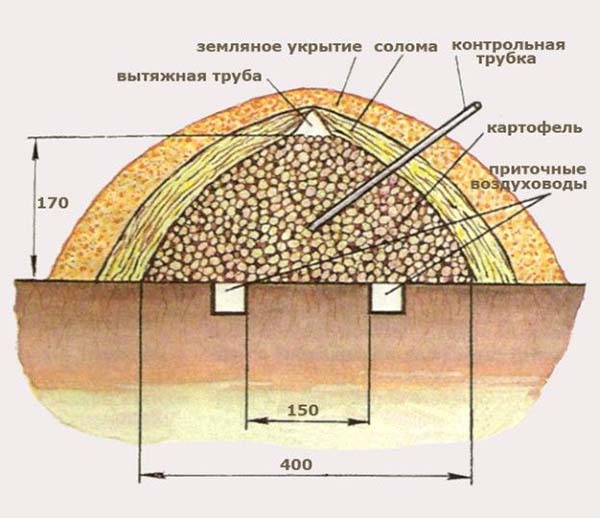
Video: storing potatoes in the winter in the garden - in the pile
Others dig a fairly deep hole 1-2 meters (and depending on the degree of freezing of the soil in your region and the occurrence of groundwater), then lay out potato tubers and cover them with a 15-20 centimeter layer of dry sand, and then with ordinary earth. Additionally, it is good to cover the underground storage with straw from above.
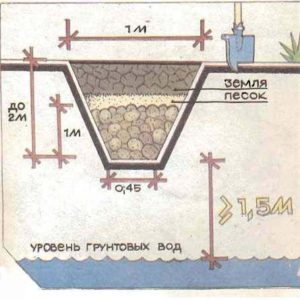
But sometimes, as the author of this video, they act in a rather original way:
Video: how to store potatoes in the ground
Why potatoes are poorly stored: the main mistakes
It often happens that you seem to have harvested the crop on time and correctly, prepared it and laid it in the cellar or on the balcony for storage, but for some reason, part of the crop deteriorated.
To prevent this from happening next time, we suggest that you familiarize yourself with possible errors in advance. At least this way you don't have to learn the hard way about losing part of the harvest.
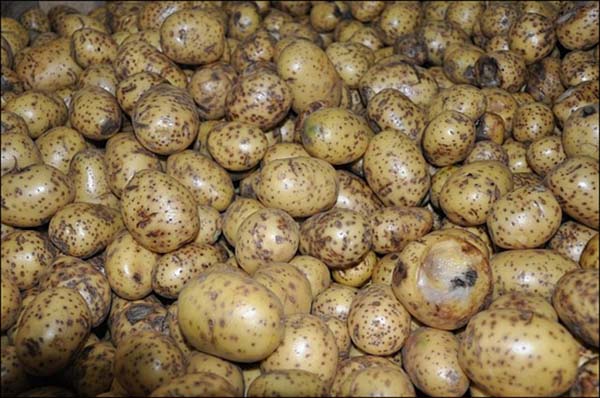
So, the most common mistakes and blunders that can be made in the process of laying potatoes for winter storage:
Wrong variety (early maturing)
Not all varieties are suitable for long-term storage. Early varieties are intended solely for consumption as food or for a short time in the cellar (1-2 months). Whatever conditions you create, still early ripe potatoes will begin to sprout, and at the same time lose their taste.
Thus, for storage, you should choose only late and mid-late varieties, maximum mid-season. Ultra-early, early and mid-early - for consumption only.
Poor quality tubers (damaged and diseased)
When storing potatoes, you should be very careful about the process of sorting and sizing them. A few diseased tubers are enough to infect the entire crop. It must be remembered that only healthy potatoes can lie all winter.
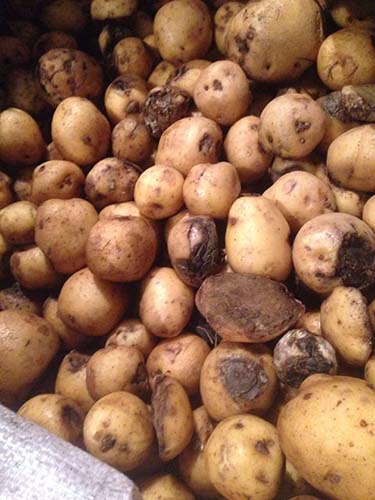
Important! Tubers with minor damage (any slight scratches or cuts obtained during digging and sorting) should be stored (albeit for a short time, they should be consumed first), but they should be kept apart, separately from the whole.
Storage with other vegetables and fruits
Often, inexperienced growers put all the vegetables in the same boxes to save storage space, but this should not be done in the case of potatoes.
You can and even need to store potatoesonly with beetsto be laid on top of the tubers. Such a neighborhood will benefit both vegetables, since the beets will take in all the excess moisture, thereby protecting the potatoes from decay.
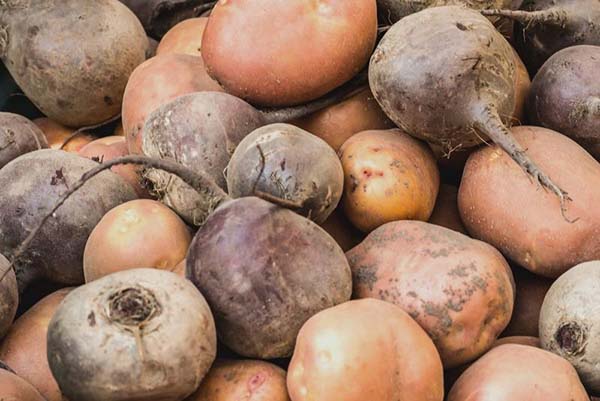
By the way! ABOUT ways to store beets for a long time read in this article.
Non-compliance with storage conditions
Violation of the requirements for the premises (its temperature, humidity (ventilation) and illumination) will result in damage to the crop.
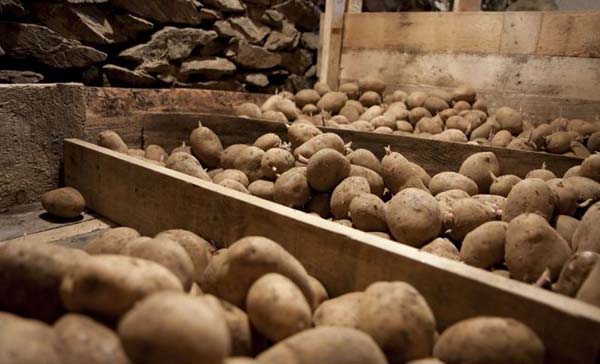
Advice! If you have problems with air circulation (the most common problem), at least try to ventilate the room in a timely manner.
If these conditions are not difficult to comply with in the cellar or in the basement, then, storing the crop in the apartment, on the balcony or on the loggia, it will be much more difficult to do this. Therefore, if you decide to store potatoes without a cellar, then you should adhere to all recommendations for home storage.
Rare preventive examinations of tubers
If you do not want to come one day and find that half of the potatoes have rotted, then periodically you need to carefully examine and sort out the tubers, rejecting the spoiled ones and those that lay next to them (perhaps the disease has simply not yet manifested itself on them).
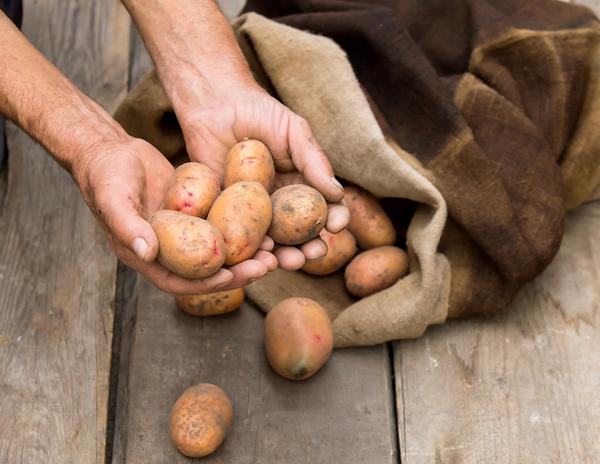
Note! Even though it looks like everything is in order in appearance, if an unpleasant smell (rotten aroma) emanates from the potato or small flies (fruit flies) fly around - these are clear signs that a rotting tuber is hidden somewhere, and it you need to quickly find and remove from storage.
Video: 5 mistakes when storing potatoes
We hope you now have a clear understanding that sorting and preparation of tubers, processing them before laying, as well as observing optimal storage conditions for harvested vegetables will help to improve the quality of stored potatoes.
Video: how to store potatoes in winter

